Shutter Speed - Mastering the Big Three of Camera Settings (#1 in a series of 4)
Every time you take a photo, there are three main settings that can be used in tandem to create the final look of the photo. Shutter Speed, ISO and Aperture. These three settings all work in tandem to control the amount of light that hits the sensor in your camera body. Adjust one of the settings and the others will react. It is the dance of these three elements that will determine the final product. Auto modes will make these decisions for you; however, you lose a lot of control over the final look of the photo.
I am going to be completely honest and confess that I am not a lover of the technical end of photography. Yet, with that being said, I do acknowledge the flat out truth that these elements need to be understood in order to control the look of your final product. I am what you would call an “emotional shooter”. I love the emotion and dramatic content of a moment in action. I crave that frozen moment of honesty whether it comes in the form of humor, elation, simplicity or intensity. Some people really get into the mathematics of photography. I am not that person, but it is important to have full control and understand what is happening inside your camera. With that being said, lets take a look at just one of those elements that comprise the Big Three.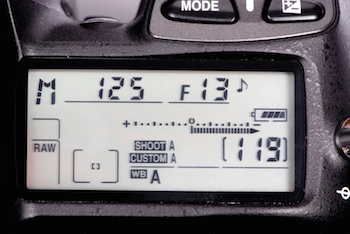
Shutter speed is simply how fast you open and close the light proof shutter inside your camera body. The shutter is like a light proof wall inside your camera that works as a shield to block the light from hitting your digital sensor. The digital sensor is the modern day equivalent of film. Your shutter speed setting controls how quickly or slowly that shutter is opened to allow light to hit your sensor. If the shutter opens slowly, the digital sensor starts to record everything it sees in that frame of time while the shutter is open. So if you were photographing an athlete moving from left to right in front of you and you had set your shutter speed at 3 seconds, you would record that runners movement for three seconds. That is an eternity in the sports photography world and the image would just be one big blur. In order to freeze the image (which is what we want to do in sports photography) we need to force that shutter to move faster. The quicker the shutter, the more the image is frozen in your camera.
As in all things photographic, we need to give the camera a number to represent how fast you want to shoot. Here is a typical list of shutter speeds. Know that some cameras dice these 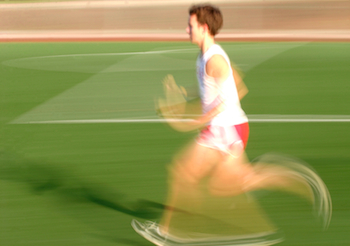 up in smaller chunks plus give you more options on either end, but here are the main ones:
up in smaller chunks plus give you more options on either end, but here are the main ones:
1 second 1/2 (half a second) 1/4 1/8 1/15 1/30 1/60 1/125 1/250 1/500 1/1000 1/2000 1/4000 1/8000.
So how do you know when you start to freeze the action? Depending on the movement of the athlete, you will start to freeze the action at around 1/500 (that is 1/500th of a second). Of course there will be times when 1/250 is good enough, but I try to use 1/500 as my slowest speed if I am trying to stop the action. I feel a lot better at around 1/1000 or 1/2000. You will also see variations of blur in the action depending on which direction the athlete is moving or where they are in their stride.
For instance, if you were photographing a lacrosse player moving across a plane in front of you, at 1/500 of a second you would most likely freeze them if they were at the full extension of their stride, and as soon as they start to pump their arm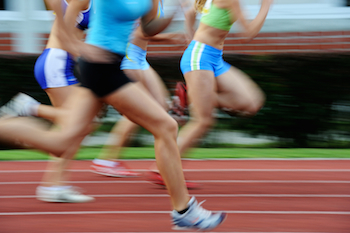 s and legs for the next stride, you may see some blur because now those limbs are moving faster. You wont need to bother yourself with those worries but this helps you understand why sometimes your shots are frozen and sometimes you have blur. That is why I like to get up around the 1/2000 or 1/4000 range. Those settings will freeze the action regardless of the movement of the athlete.
s and legs for the next stride, you may see some blur because now those limbs are moving faster. You wont need to bother yourself with those worries but this helps you understand why sometimes your shots are frozen and sometimes you have blur. That is why I like to get up around the 1/2000 or 1/4000 range. Those settings will freeze the action regardless of the movement of the athlete.
Keep in mind that this level of control happens when you are in the M or Manual Mode. In the Manual Mode you are controlling each of the three settings and to get those frozen photos with short depth of field, you will need to know how to control these camera settings. When you switch to the Auto or Sports Mode, the camera starts to make those decisions for you and sometimes they work and sometimes they don't. Want to get better? Hang in there and understand the Big Three.
Have a blast!
NEW! Free Sports Organization Resources
All of TeamSnap's ebooks, articles, and stories in one place. Access Now
Similar Articles:
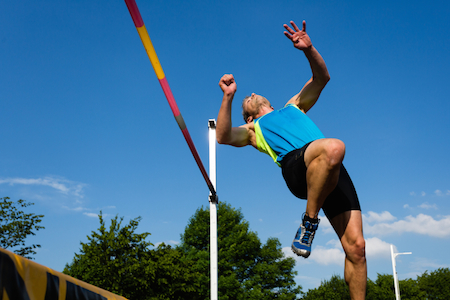
Photographing Sports - Mastering the Big 3 Camera Settings (#4 in a series of 4)
So after reading this four part series on the Big Three…
Read More
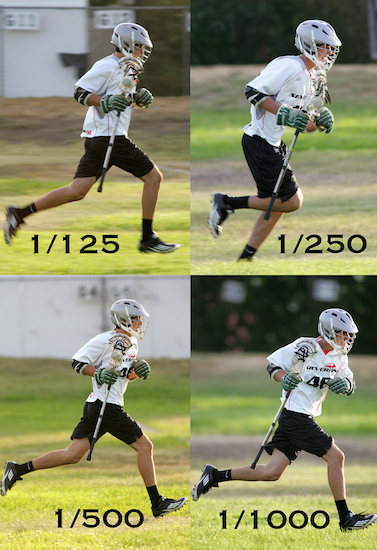
Shutter Speed - Mastering the Big Three of Camera Settings (#1 in a series of 4)
Every time you take a photo, there are three main settings…
Read More
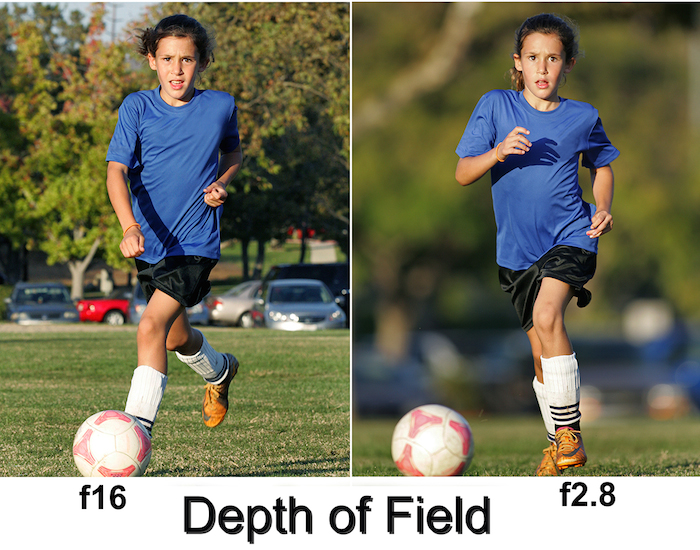
Depth of Field Tips in Sports Photography
So why the heck do photography terms sound so complicated?…
Read More
